Pull off US 23 onto Lake Sakakawea Road and continue past an expansive solar field until reaching a circular structure reminiscent of the Badlands. Park and walk past an unforgettable welcome from the Three Chiefs sculpture by MHA Tribal Member Kathy Whitman. You have arrived at the Three Affiliated Tribes – Mandan, Hidatsa, and Arikara Peoples’ vision of almost 20 years – The MHA Nation Cultural Interpretive Center.
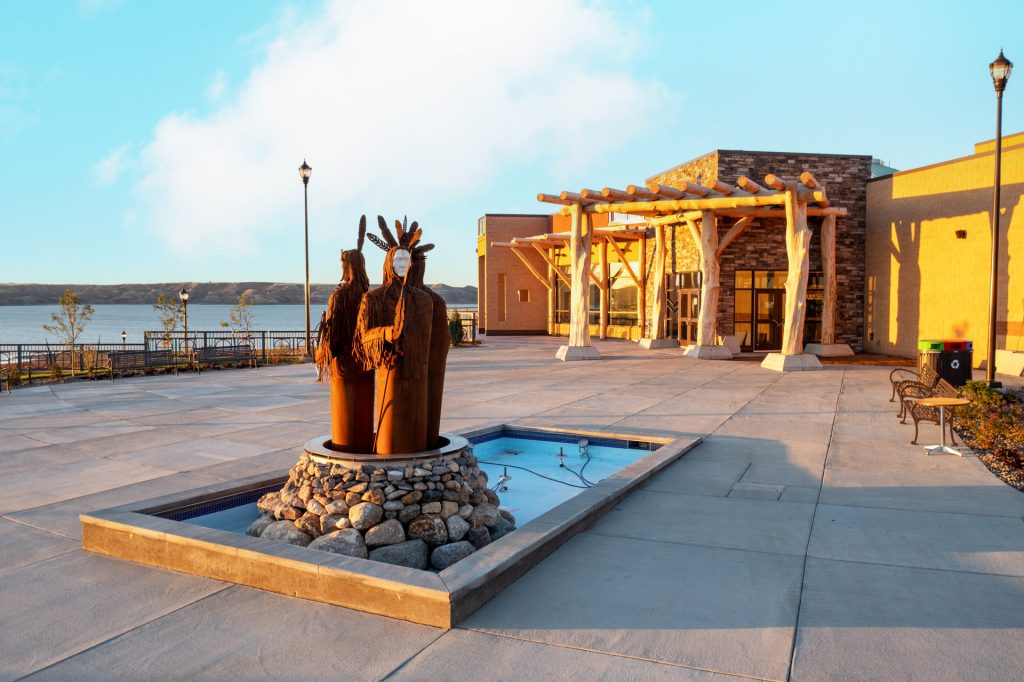
DSGW Architecture was originally commissioned in 2003 to design a Lewis and Clark Bicentennial Interpretive Center by the MHA Nation as they had received a grant from the US government. But in 2003, the MHA Nation still did not have enough money to construct the project. Fast forward to 2017, when Delphine Baker, Director of the Interpretive Center, put out a Request for Proposals for this project, which coincidentally happened to be on the exact same site as the one DSGW had worked with previously. DSGW was hired to use the original design and update it to today’s codes, a somewhat revised program, and create a Net Zero-friendly design. That 2003 effort included many MHA tribal members were instrumental in the original design – the very first Native American architect licensed in North Dakota, an MHA member, and NDSU graduate, Denby Deegan (deceased) was a part of that original team.

The Center is located on the homelands of the Mandan, Hidatsa, and Arikara Peoples, overlooking Lake Sakakawea, the second largest man-made reservoir in the United States. The Garrison Diversion resulted in the creation of the Garrison Dam and Lake Sakakawea, which ultimately flooded the Tribal lands, displacing its peoples and wiping out everything out in its wake. The Tribes were resilient. They survived disease and pandemic, displacement, and flooding. Now the Interpretive Center provides a path to remembrance, giving visitors a unique opportunity to immerse themselves in the culture, history, strength, and traditions of the Three Affiliated Tribes.
“We are raised to believe that the Missouri River is a part of who we are. Our people are of this land and this water. The idea that the federal government wants to deny that this is our river and these are our rights ignores the fact that my ancestors were born on the Missouri River. This is the home of the Mandan, Hidatsa, and Arikara, and we have always lived here.”
~ Dr. Monica Mayer, Tribal Councilmember, MHA Nation
Several representations of the MHA Nation Tribal stories are woven throughout the facility. Guests of the center will experience a story within each of the spaces specifically curated by the tribal community members representing the three distinct nations who call this place home.
The layout is centered around an earth lodge, constructed of imported cottonwood trees. Ancestors of the MHA Nation once lived in earth lodges built from the cottonwood trees that were native to the area but were all destroyed during the flooding of their homelands due to the Garrison Diversion.
Incorporating structures made by Whole Trees was an intentional design decision to create an environment that teaches future generations about how their homes were once made. The fact that these cottonwood tree elements had to be imported from two states away reflects what was lost.
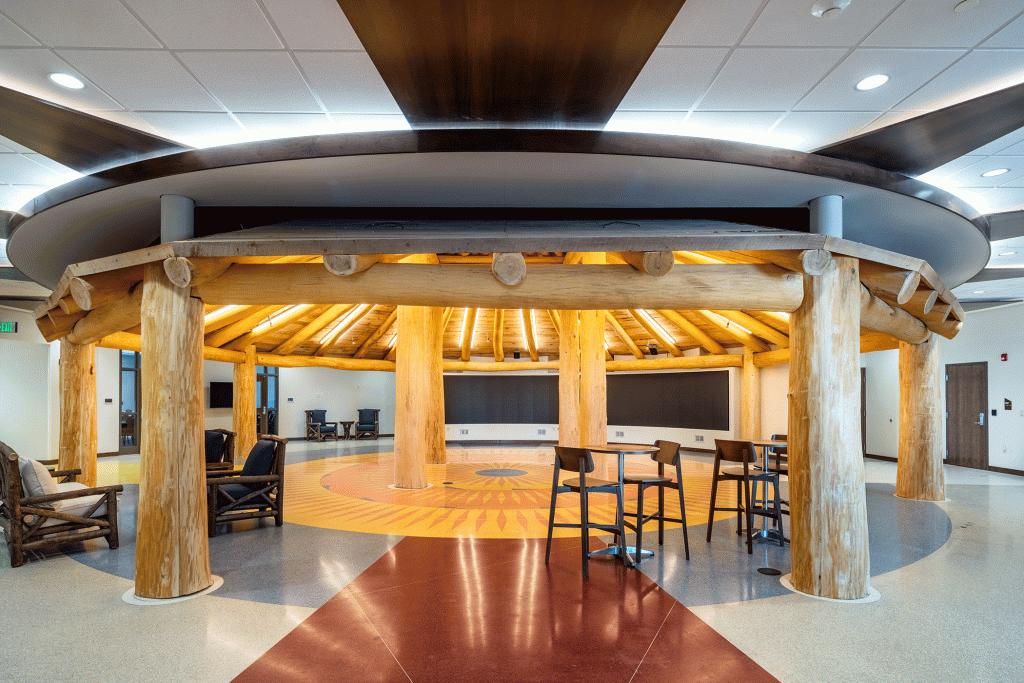
“We want our buildings to become Elders, to have a spirit of their own, and create an environment of subsistence which will help sustain Tribal cultures.”
~ Mike Laverdure, DSGW Architecture
Follow the winding path of the Missouri River through the history of the Tribes to immersive scenes, artifact displays, and a vivid hand-painted mural in the cultural museum. An MHA-produced video welcomes visitors to the exhibit space, as listening stations and multilingual interpretive panels create opportunities to hear directly from MHA community members in one of the three languages that are a part of this Nation – Mandan, Hidatsa, and Arikara. A custom recording space is focused on recording the historical and cultural knowledge of the MHA tribal members, to be passed forward to future generations.
The museum-grade archival space, with a vortex fire suppression system, influences the possibility for the MHA Nation to repatriate items, providing a safe home for the artifacts that are returned to their rightful owners. Repatriation, as defined by the National Museum of the American Indian, as “… the process whereby human remains and certain types of cultural items are returned to lineal descendants, Indian tribes…” (https://americanindian.si.edu/sites/1/files/pdf/repatriation/NMAI-Repatriation-Policy-2022-r.pdf)
Repatriation efforts are essential as Tribes are becoming more active in receiving items that were stolen or lost to colonization. Tribes like the MHA Nation are building facilities to create a tangible avenue for these items to be repatriated, without exception by outside entities who may state they cannot return due to lack of adequate facilities. Repatriation is a human rights issue for Indigenous peoples, and this effort, while not being the most visible to the visiting public, is significant to the MHA Nation.
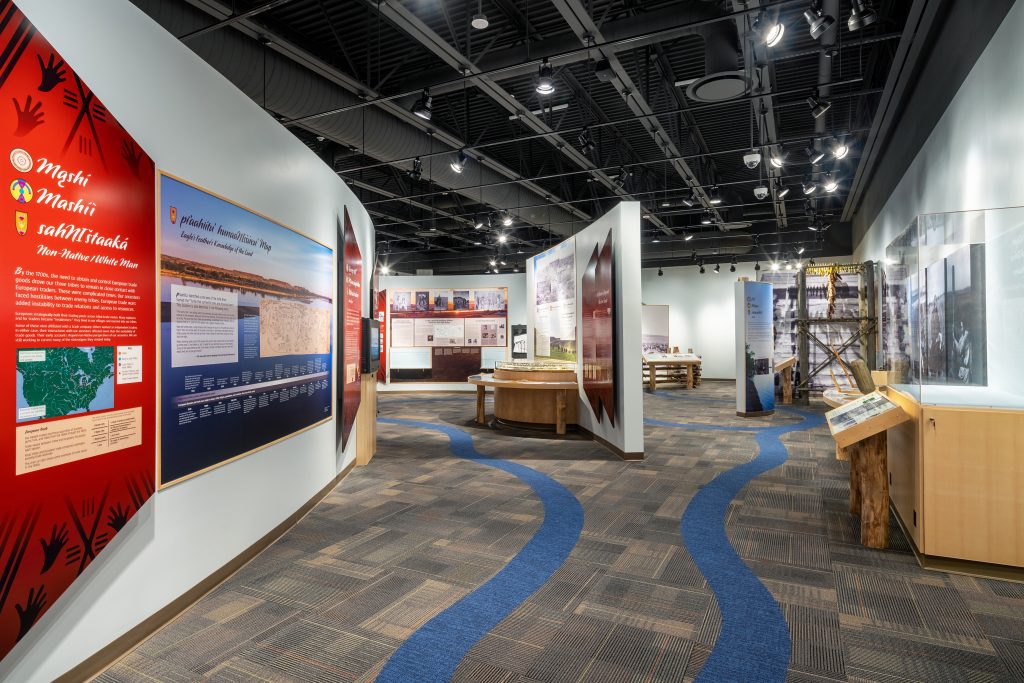
Outside visitors can enjoy a traditional meal prepared in the commercial kitchen before continuing their cultural journey through a flanked path of thoughtfully selected native plants and materials to enjoy a performance at the 500-seat outdoor amphitheater. The stage includes another installation by Whole Trees and is strategically positioned to afford every viewer a stunning view of the performance/ceremony and Lake Sakakawea. The outdoor amphitheater intends to have cultural performances for visitors highlighting the cultures of the MHA Nation.
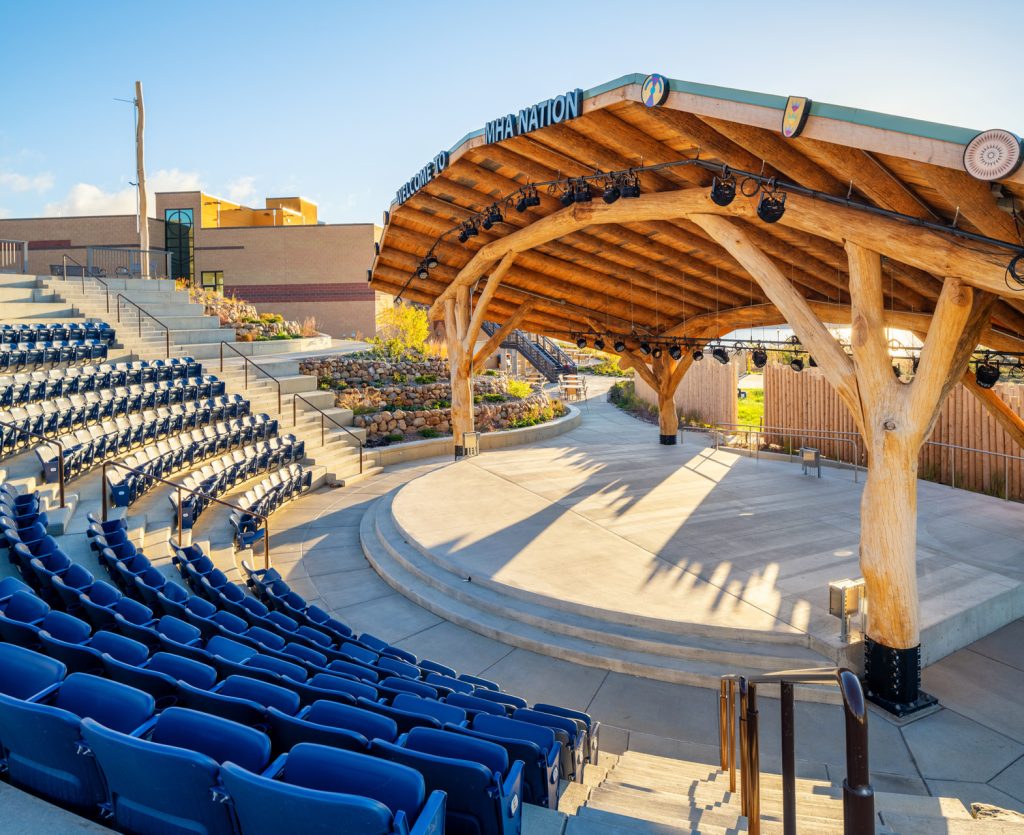
Additional spaces include a coffee shop appropriately named “Mirishibisha” (or Black Water), conference areas that can be divided into smaller meeting rooms with access to outdoor seating, a gift shop, rooftop seating complete with gardens and a telescope to provide expansive views of the lake, a demonstration room for small performances and recordings, offices, a library, and even a recording studio large enough to accommodate a drum circle.
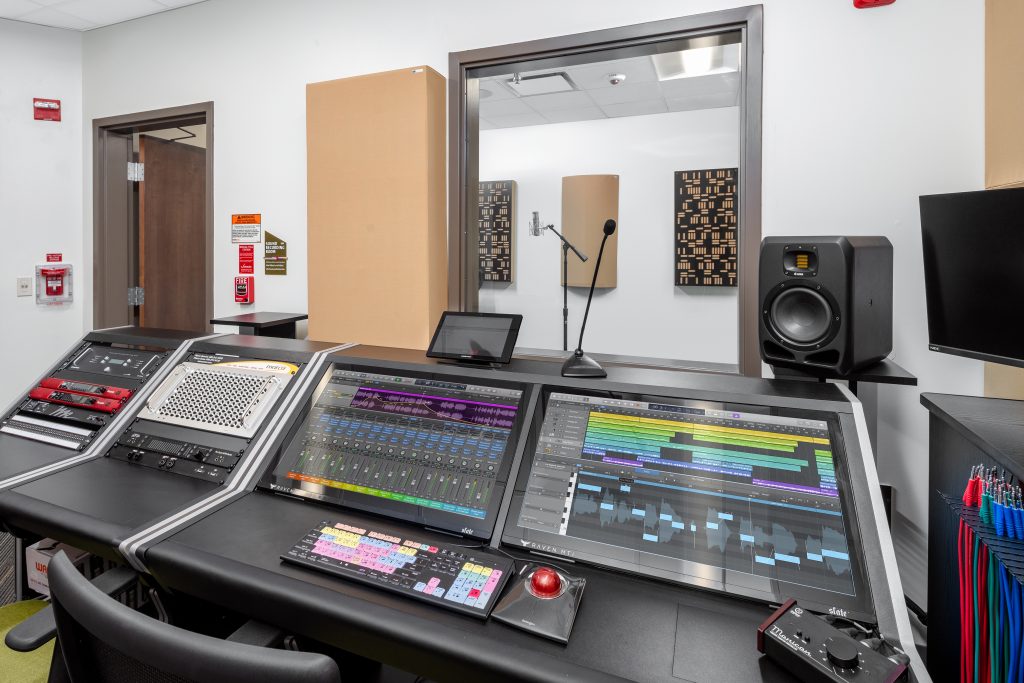
“Treading Lightly” and respecting Mother Earth are always significant to the Indigenous communities for whom we work. The structural system consists of energy-efficient insulated concrete forms, which were changed from CMUs in the original 2003 design. A roof garden provides some shade and insulative values while helping with stormwater mitigation. The site uses geothermal energy to reduce the building’s heating and cooling load. The solar field over the past 11 months (March 2022 – January 2023) produced 533,351 kWh, while the building consumed a total of 525,351 kWh completely offsetting the electrical energy costs of the project, effectively creating a net-positive energy profile.
“The MHA Nation Cultural Interpretive Center is much more than just a building for the People of the Mandan Hidatsa and Arikara Nation. It’s about identity. It’s about belonging. It’s about knowing who you are and when you have peace with that, that’s when a lot of things begin to change both personal and as a people. This facility plays a big part of that healing process.”
~ Mark Fox, Tribal Chairman
A vision that started long before 2003, the MHA Interpretive Center is now operating almost 20 years after the first design meeting occurred. Being an elder. Helping visitors and Tribal members understand what it means to call the lands along the river home, the home of the MHA Nation.
To view the 2022 3rd Place AIA Film Challenge video, Regenerative Architecture on the Mandan Hidatsa and Arikara Nation – Click HERE.
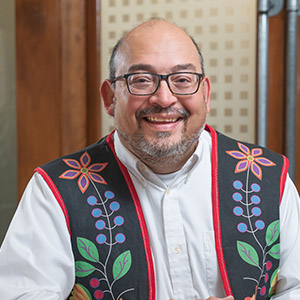
Article written for the North Dakota AIA Magazine by Mike Laverdure, Managing Principal at DSGW Architecture